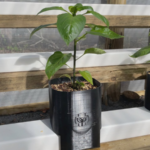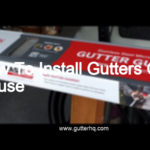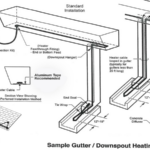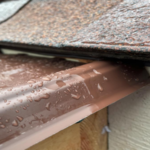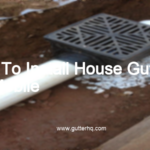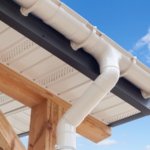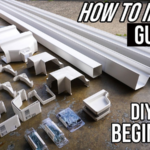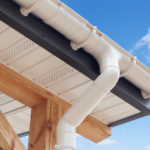Installing a better gutter on a house is a simple process that can be completed in a few hours. First, remove the old gutter system and clean the area around the house where the new gutters will be installed. Next, measure the length of the area to be covered and cut the new gutters to size. Next, predrill holes in the new gutters and attach them to the house using screws or nails. Finally, attach the downspouts to the gutters and make sure they are properly draining away from the house.
How can I make my gutters flow better?
- First, check your gutters to see if they are clogged with leaves or other debris. If they are, clear them out so that water can flow freely through them.
- Another way to improve gutter flow is to make sure that they are sloped properly. Gutters should be sloped so that water flows towards the downspouts.
- If your gutters are still not flowing well, you may need to replace them. Older gutters can become warped or damaged, which can cause them to lose their shape and function.
- You can also install gutter guards or screens over your gutters to keep leaves and other debris from getting in and clogging them up.
- Finally, make sure that your downspouts are clear and not blocked by debris. If they are, water will back up in your gutters and cause them to overflow.
What is the best gutter to put on your house?
There are many types of gutters to choose from when deciding which one to put on your house. Some of the factors you may want to consider are the climate you live in, the type of roof you have, and the amount of rainfall your area gets.
If you live in an area with a lot of rainfall, you’ll want to make sure your gutters can handle the heavy loads. Some of the best gutters for this are seamless gutters, which are made from a single piece of material and don’t have any joints or seams that can leak. Another option is to install gutters with larger downspouts, which can handle more water.
In terms of climate, if you live in an area with severe weather conditions, you’ll want to make sure your gutters can withstand the high winds and heavy snow or ice. Some of the best gutters for this are those that are made from aluminum or steel, which are both very strong materials.
Finally, you’ll also want to consider the type of roof you have when choosing gutters. If you have a shingled roof, you’ll want to avoid gutters that hang over the edge of the roof, as they can damage the shingles. Instead, opt for gutters that are mounted underneath the roofline.
Is it normal for water to sit in gutters?
Gutters are designed to channel water away from your home, so it’s not unusual for them to fill up with water during a rainstorm. However, if water is sitting in your gutters long after the rain has stopped, that’s a sign that there’s a problem.
There are a few possible reasons why water might be pooling in your gutters. One possibility is that the gutters are clogged with debris, such as leaves or twigs. This can prevent water from flowing freely through the gutters and cause it to pool up instead.
Another possibility is that the gutters are too shallow. If the gutters are too shallow, they won’t be able to handle a large volume of water, and the water will overflow.
If you notice water sitting in your gutters, it’s important to take action to correct the problem. Otherwise, the water could cause damage to your gutters or even your home.
How do you keep gutters from overflowing in heavy rain?
- Keep your gutters clean and free of debris. Clogged gutters can’t handle heavy rains and will overflow.
- Inspect your gutters regularly and repair any cracks or leaks.
- Make sure your gutters are properly pitched so that water can flow freely through them.
- Install gutter guards or covers to keep leaves and other debris out.
Do gutter extenders work?
The short answer is yes, gutter extenders can be an effective way to keep your gutters clean and free of debris. However, there are a few things to keep in mind before you install them.
First, gutter extenders only work if they are installed correctly. If they are not installed correctly, they can actually do more harm than good.
Second, gutter extenders only work if they are the right size for your gutters. If they are too small, they will not be effective. If they are too large, they can cause your gutters to overflow.
Third, gutter extenders only work if they are made of the right material. Some materials, like plastic, can actually deteriorate over time and become less effective.
Fourth, gutter extenders only work if they are installed properly. If they are not installed properly, they can actually do more harm than good.
Finally, gutter extenders only work if they are maintained properly. If they are not maintained properly, they can become less effective over time.
So, if you are considering installing gutter extenders, make sure you do your research and find the right size, material, and installation method for your gutters. And, be sure to maintain them properly to keep them working effectively.
Conclusion
There are a few things to keep in mind when installing a gutter on your house. First, make sure the gutter is the proper size for your home. Second, be sure to install the gutter at the correct angle so that it will work properly. Third, use the proper materials and tools to install the gutter. And finally, be sure to test the gutter before you use it to make sure it is working properly.




